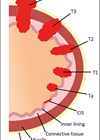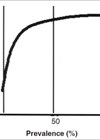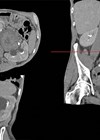Features
Keep patients at the heart of treatment decision
Rebecca Porta, Chief Executive of The Urology Foundation, and Chris Whitehouse, Chair of the Urology Trade Association, mark Urology Awareness Month. Rebecca Porta. Chris Whitehouse. Keep patients at the heart of treatment decision This September marked Urology Awareness Month (UAM),...
Frailty in urology – part 1
Part 2 of this topic can be found here Statement of the problem Clinical frailty carries an increased risk of poor health outcomes. The pathological process resulting in frailty is often overlooked and elucidating its aetiology and natural history are...
Recent developments in bladder cancer – MIBC
This article takes a look back over recent years at new innovations and developments relating to muscle-invasive bladder cancer (MIBC) specifically, and will also touch upon what the future may hold. This article is also written as a continuation of...
Burnout: is this just a pandemic phenomenon?
The phrase ‘burnout’ is often heard, but what is it, and what are the early warning signs? Importantly, how can it be prevented or managed? Over the last few years, health professional wellbeing, mental health, and burnout have come to...
Orchid: fighting male cancer for over 25 years
Orchid was established in 1996 by a young testicular cancer patient, Colin Osborne MBE, and the oncologist who saved his life, Professor Tim Oliver MD, FRCP. The charity exists to save men’s lives from testicular, penile, and prostate cancers and...
Fertility Network UK: raising awareness of male infertility
Fertility Network UK are reaching out to clinicians in the urology field to raise awareness of the need to support men as the diagnosis of infertility on their emotional wellbeing and mental health can be devastating. This lack of support...
Medical statistics for urologists: part 3 – diagnostic testing
Following on from the first two parts of this series (see Part 1 here, and Part 2 here), this final article aims to demonstrate how the theory of statistics applies to medical diagnostics. Probability in diagnostic testing Diagnostic tests refer...
Challenges of upper tract urothelial carcinoma
Upper tract uroepithelial carcinoma (UTUC) is a fairly common disease which traditionally had poorer outcomes compared to bladder cancer. This is due to various factors leading to delayed diagnosis and problems in risk stratification. Continuing efforts have focused on early...
‘Man van’ launched to speed up cancer diagnosis and improve healthcare access
The ‘Man Van’, an innovative new outreach programme, was launched in March this year to provide free health checks for men and boost early diagnosis of prostate and other urological cancers. The mobile health clinic will visit workplaces and churches...
BAUS 2022: Welcome to BAUS 2022. The return of face to face…
What a pleasure it is to write this welcome to the BAUS congress for 2022. The three years that have elapsed since we all met and celebrated together seem like an eternity and I’m sure we are relishing the chance...
An overview of non-surgical treatment options for Peyronie’s disease
Peyronie’s disease (PD) is a therapeutic challenge despite the availability of several non-surgical and surgical options. Very few of these options are supported by good quality evidence according to the current American and European guidelines [1-3]. The period of plaque...
An account of training and practice of urology in Nigeria
Nigeria is the most populous nation on the continent of Africa. Within the country, there are 33,303 general hospitals and 59 tertiary hospitals to serve a population of approximately 210 million people [1]. Specialty-based practice of urology is domiciled in...














